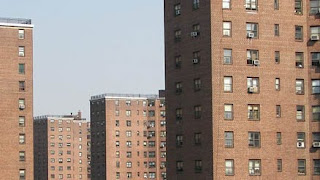
WASHINGTON, Aug. 16, 2009 — Mention rosemary, thyme, clove, and mint and most people think of a delicious meal. Think bigger…acres bigger. These well-known spices are now becoming organic agriculture's key weapons against insect pests as the industry tries to satisfy demands for fruits and veggies among the growing portion of consumers who want food produced in more natural ways.
In a study presented here today at the
American Chemical Society's 238th National Meeting, scientists in Canada are reporting exciting new research on these so-called "essential oil pesticides" or "killer spices." These substances represent a relatively new class of natural insecticides that show promise as an environmentally-friendly alternative to conventional pesticides while also posing less risk to human and animal health, the researcher says.
"We are exploring the potential use of natural pesticides based on plant essential oils — commonly used in foods and beverages as flavorings," says study presenter
Murray Isman, Ph.D., of the University of British Columbia. These new pesticides are generally a mixture of tiny amounts of two to four different spices diluted in water. Some kill insects outright, while others repel them.
Over the past decade, Isman and colleagues tested many plant essential oils and found that they have a broad range of insecticidal activity against agricultural pests. Some spiced-based commercial products now being used by farmers have already shown success in protecting organic strawberry, spinach, and tomato crops against destructive aphids and mites, the researcher says.
"These products expand the limited arsenal of organic growers to combat pests," explains Isman. "They're still only a small piece of the insecticide market, but they're growing and gaining momentum."
The natural pesticides have several advantages. Unlike conventional pesticides, these "killer spices" do not require extensive regulatory approval and are readily available. An additional advantage is that insects are less likely to evolve resistance — the ability to shrug off once-effective toxins — Isman says. They're also safer for farm workers, who are at high risk for pesticide exposure, he notes.
But the new pesticides also have shortcomings. Since essential oils tend to evaporate quickly and degrade rapidly in sunlight, farmers need to apply the spice-based pesticides to crops more frequently than conventional pesticides. Some last only a few hours, compared to days or even months for conventional pesticides. As these natural pesticides are generally less potent than conventional pesticides, they also must be applied in higher concentrations to achieve acceptable levels of pest control, Isman says. Researchers are now seeking ways of making the natural pesticides longer-lasting and more potent, he notes.
"They're not a panacea for pest control," cautions Isman. Conventional pesticides are still the most effective way to control caterpillars, grasshoppers, beetles and other large insects on commercial food crops, he says. "But at the end of the day, it comes down to what's good for the environment and what's good for human health."
The "killer spices" aren't just limited to agricultural use. Some show promise in the home as eco-friendly toxins and repellents against mosquitoes, flies, and roaches. Unlike conventional bug sprays, which have a harsh odor, these natural pesticides tend to have a pleasant, spicy aroma. Many contain the same oils that are used in aromatherapy products, including cinnamon and peppermint, Isman notes.
Manufacturers have already developed spice-based products that can repel ticks and fleas on dogs and cats without harming the animals. Researchers are now exploring the use of other spice-based products for use on fruits and vegetables to destroy microbes, such as E. coil and Salmonella, which cause food poisoning.
Other scientists are currently exploring the insect-fighting potential of lavender, basil, bergamot, patchouli oil, and at least a dozen other oils from exotic plant sources in China. Funding for this study was provided by EcoSMART®, a botanical pesticide company based in Alpharetta, Ga.







.jpg)

.jpg)
.jpg)